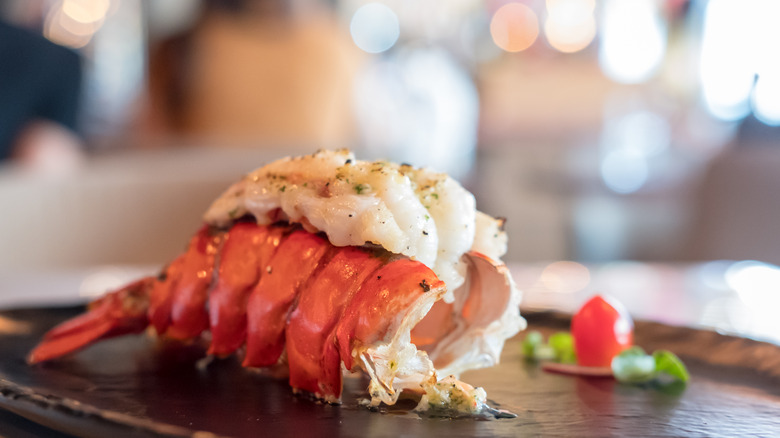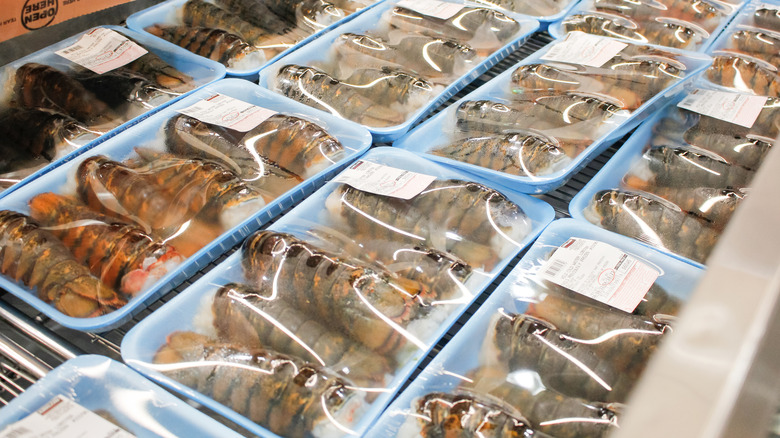Why Size Is Important When Picking Out Lobster Tails
Of all the culinary indulgences out there, fresh lobster has got to be one of our very favorites. Whether enjoyed at a restaurant or at home, lobster feels like a true indulgence — which isn't surprising, given its high price tag. With the average price per pound of live Maine lobster running about $27, according to Crabbing Hub, you're going to want to make every decision count when you head to your local fishmonger to pick up some crustaceans.
Lobster Anywhere recommends looking for a lively, active lobster, which indicates that the animal was recently caught and is in good health. But if you live in an area where there's not much fresh lobster around, or if you simply prefer to eat just the tails, you can look for frozen lobster tails. This part of the lobster is meaty and quite easy to eat, according to Lobster Anywhere, and they're pretty easy to find at supermarkets including Publix and Safeway.
Bigger isn't better when it comes to lobster tails
So you want to buy some frozen lobster tails, and you're trying to figure out how best to do so. One thing that's important to remember, according to Reader's Digest, is that smaller lobster tails have better flavor and texture. While it can be fun to crack into a giant lobster tail, it actually won't be as delicious an experience, with the outlet explaining that smaller tails are sweeter and have a smoother texture than larger ones.
So, how small is small? The Chopping Block recommends looking for tails that weigh between five and 12 ounces each. The site also counsels making sure frozen lobster tails are sourced from cold water, buying them frozen, not thawed, and avoiding any tails that have been soaked in sodium tripolyphosphate, a chemical that The Fish Site explains is potentially toxic. Plan for one lobster tail per person, Better Homes & Gardens advises, bust out your kitchen shears, and get ready to melt some butter and dig in.

